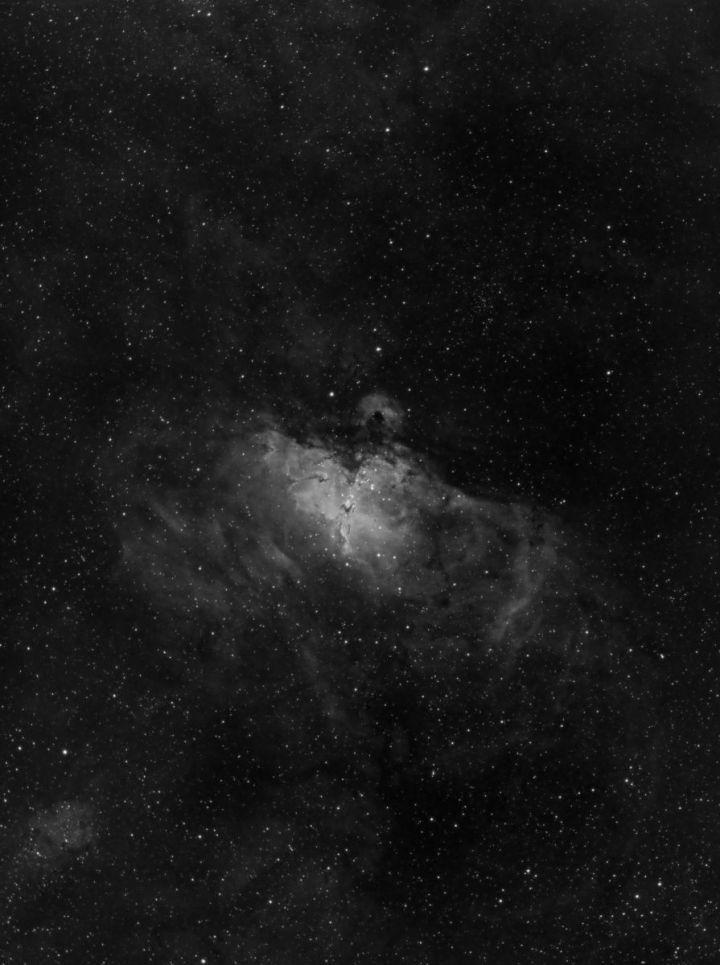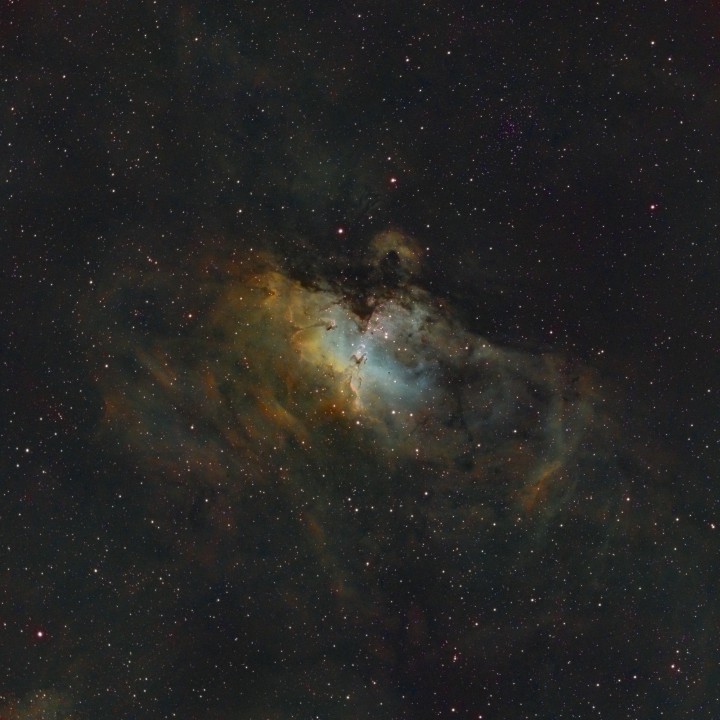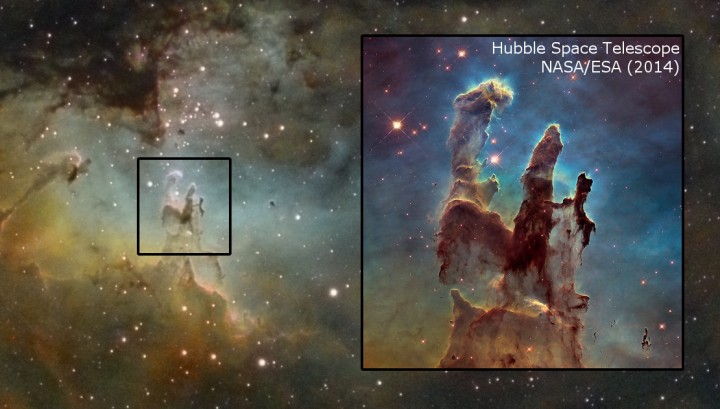Update 27/08/2017: added 50 minutes of OIII data and reprocessed the complete data set with the Tone Mapping technique.
The Eagle Nebula is a region of interstellar gas and dust that lies about 6500 light years from Earth. I chose this target for the first light of my new cooled camera. This is always a very exciting moment!
This first image was shot through a hydrogen alpha (Ha) filter. This filter blocks almost all light pollution and moonlight and therefore greatly increases the contrast of emission nebula. Hydrogen is also the most abundant element in the universe, so many nebula have a very strong Ha signal. Ionized hydrogen gas emits light with a wavelength of 656.28 nm, which is a deep-red color.
The Eagle Nebula in Hydrogen alpha
Exposure: 30 x 90 sec (45 minutes)
Captured from within the city center
SQM: 17.5 Mag/sq arc sec
I also imaged the nebula through two different filters. The OIII filter is selective for the blue-green light (500.7 nm) from doubly ionized oxygen gas. Similarly, the SII filter passes light from ionized sulfur gas, which emits primarily at 672.4 nm (deep-red light).
The data from the three filters (Ha, OIII and SII) was blended to produce a false color picture. This technique is commonly used to show were the different gasses are located and how bright they shine. For example, both Ha and SII emit deep-red light, so it would be very hard for us to differentiate deep-red and slightly-deeper-red in a conventional photo.
In my image, I mapped SII to red, Ha to green and OIII to blue. The color choice is actually arbitrary, but I wanted the photo to resemble the typical color palette seen in images from the Hubble Space Telescope. This SII-Ha-OIII color assignment is commonly referred to as the “Hubble palette“. Since the Ha signal is much stronger than the other two channels, I used the Ha data as a luminance layer.
The Eagle Nebula in the Hubble color palette
27 August 2017
Exposure:
23 June 2017
Ha: 30 x 90 seconds (45 minutes)
SII: 60 x 90 seconds (90 minutes)
5 August 2017
OIII: 25 x 120 seconds (50 minutes)
The center of the image includes the open star cluster M16 and several intricate structures of dust and gas that are the birthplace of new stars.
The Hubble Space Telescope captured these Pillars of Creation in 1995, and it remains one of the most iconic Hubble images to date.
Below is a comparison between my data and the image from the HST. This clearly shows the incredible resolution obtained by the Hubble Space Telescope.
The Pillars of Creation
What truly baffles me is the fact that these objects were completely invisible to the naked eye. The telescope was just staring at a black patch of sky, and I couldn’t even see a single star in that region from my location.
Conclusion: narrow band filters are amazing for city-bound astro photographers!





2 thoughts on “M16 – the Eagle Nebula”